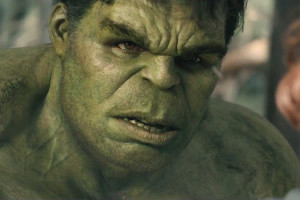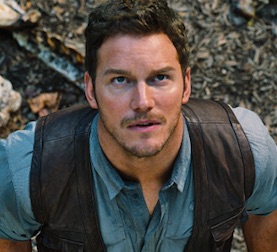On the occasion of Comic Con and the recent premieres of Inside Out (Pete Docter) and Minions (Pierre Coffin and Kyle Balda), let’s talk about animation. The movies have always had a problem with animation. Not a problem with producing animation, which has been a part of movie history from the beginning (and may even define what a “movie” is, but more about that below). And not a problem either with profiting from animation, either, especially during those screen ages (like our current one) where animated movies are reliable franchises and moneymakers.
The problem is that we have a hard time talking about animation, including whether animated movies are “real” movies, whether we should take them seriously, and whether we should include them in the history of the movies, an issue I address in Screen Ages in relation to Walt Disney, arguably the most famous filmmaker of all-time, yet whose work (and the work of the entertainment empire which continues to bear his name) is often considered a niche area, a subgroup of screen experiences mainly of interest to children (whom we also tend to view as unimportant, regardless of how we sentimentalize about them).
The differing critical approaches to Inside Out and Minions provide a case in point. Even as prominent reviewers such as A.O. Scott were quick to proclaim this latest movie from Pete Docter and Pixar a masterpiece, many of these reviews also participate in a form of special pleading, the longstanding “good even though it’s a cartoon” argument. It’s a strategy that seems aimed at persuading “serious” movie fans that this animated movie is different. As Scott puts it, “The youngest viewers will have a blast, while those older than Riley [the 11-year-old hero of the movie] are likely to find themselves in tears.” In other words, “trust me, this isn’t just a movie for kids!”
Minions seems less fraught in this respect. Most reviewers have no problem assuming this is a movie clearly aimed at children, as this opening paragraph from Newsday’s Rafer Guzmán makes clear: “Small children, rejoice! Your favorite animated characters from Universal’s “Despicable Me” franchise are starring in their own feature film. . . . ‘Minions’ may be your parents’ idea of a nightmare, but it’s your dream come true.” I’m not saying Guzmán is wrong about the target audience for Minions, but clearly many of the choices made in the movie are aimed at older viewers, including setting the bulk of the story in the swinging London of the 1960s. Yet the question of whether adults might want to see Minions on their own seems off the table from the beginning. Good or bad, Minions is a cartoon for kids, if that isn’t redundant.
This critical ambivalence is expressed in the two terms I used interchangeably above: when we want to praise Inside Out, we refer to it (like the Oscars do) as “animation”; if we want to dismiss Minions, we call it a “cartoon.” In fact, “cartoon” is often used pejoratively to criticize “non-animated” movies. An underdeveloped or exaggerated character will be described as “cartoonish,” as if by definition a cartoon character is worse than a, well, what really? What is the opposite of a cartoon character? A “real” character, even if that character, like Hamlet or Atticus Finch, is completely fictional? What’s wrong with being a “cartoon” character?
These questions all beg the fundamental question of just what we mean by calling a movie a cartoon. On the one hand, it seems like a dumb question: everyone knows what a cartoon is! It’s a movie made up of drawings rather than photographs of “actual” people! Except, of course, it’s not. “Stop action” animation, for example, has always relied on photographs of “actual” models (as in the example of King Kong (Merian C. Cooper 1933).
And of course in the digital screen age, nothing we see in Inside Out or Minions is “drawn” in the analog sense of the term. The images are created within computer hard drives, just like these recent images from two other 2015 movies:
Are Avengers: Age of Ultron (Joss Whedon) and Jurassic World (Colin Treverrow) “animated’ movies? Kind of. Really, all movies are and have been since the beginning of cinema. The primary visual experience of the movies, whether “animated” or “real,” depends on the viewing of a rapid series of still images, however they were produced.
The cartoonist and theorist of cartooning Scott McCloud offers us one way of getting at the “problem” of animation. In his landmark (and incredibly accessible) Understanding Comics, McCloud creates a scale of visual images based on how more or less abstract they are:
Another way he puts it: the more “cartoony” a face, the more relatable it is, and he even suggests this is why children are so drawn to “cartoon” faces. So far, so good. The simpler the image, the more relatable and universal. But McCloud takes his scale a step farther to consider the most abstract pictures of all: words.
The point he makes here, I think, has provocative implications for our understanding of animation. As McCloud asserts here, the more cartoony (or abstracted) an image, the greater the levels of perception required to make sense of the image, where the more “realistic” the picture, the easier it is to recognize and the less brainwork is needed. Try it! Which image of a “face” do you recognize more quickly?
But as McCloud also says, the opposite is at work with the pictures we call words. There, the more “abstract” the word (“face”), i.e., the more the word is like a picture, the easier it is to recognize, while the less the verbal description is like a picture (“Thy youth’s proud livery, so gazed on now”), the more analysis is involved.
The overall implication of his scale places cartoon images closer to the condition of words than more representational (“realistic”) pictures. So a cartoon like Inside Out is closer to Shakespeare (the writer of the description of the far right) than a movie like, say, Citizen Kane (Orson Welles 1941). Except, of course, that both Inside Out and Citizen Kane are also full of words (as is Minions, although much of these words are abstractions of words, “nonsense” words like those in Lewis Carroll’s “Jabberwocky,” which themselves demand higher levels of perception to understand them as “word-like”).
So what’s wrong with being a “cartoon” character? As McCloud’s book points out, there’s nothing simple at all about how perception and interpretation work in relation to comics—and by extension movie cartoons. And Inside Out even provides its own case studies in McCloud’s theories, as when the characters (representational figures of abstract ideas) of Joy and Sadness become “abstracted” by Riley’s brain into their component parts, or when the more cartoonish emotions watch a movie of the more representational images of Riley’s memories:

Maybe the problem we have with animation is really the “problem” we have exploring the mystery of all screen experiences, which is really the mystery of what’s going on in our heads. And if you want to gain a better understanding of that, go see Inside Out!






